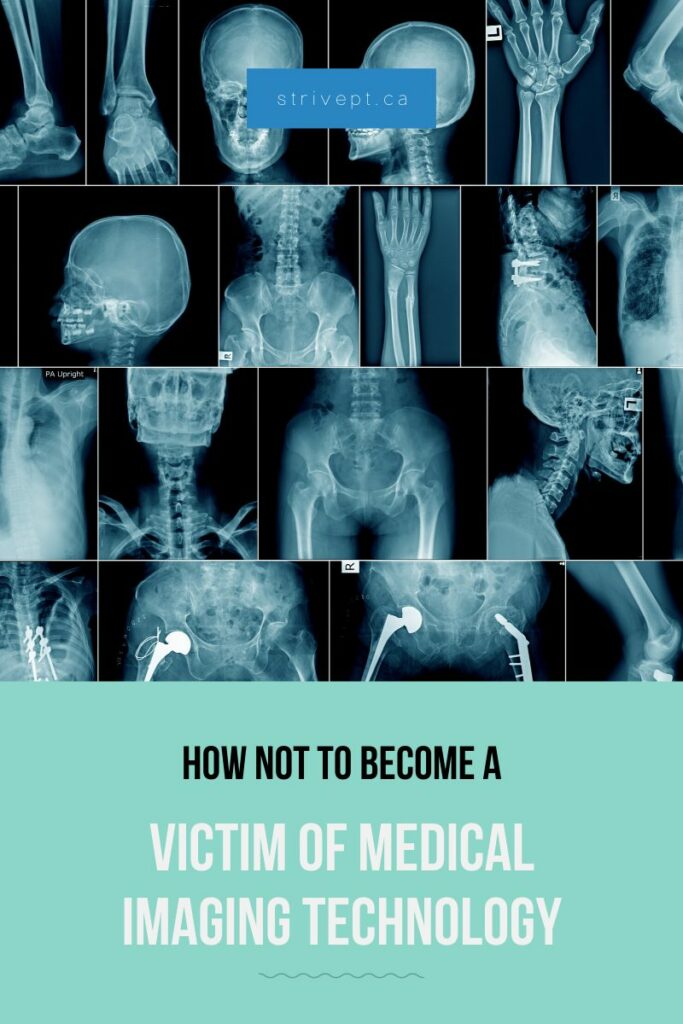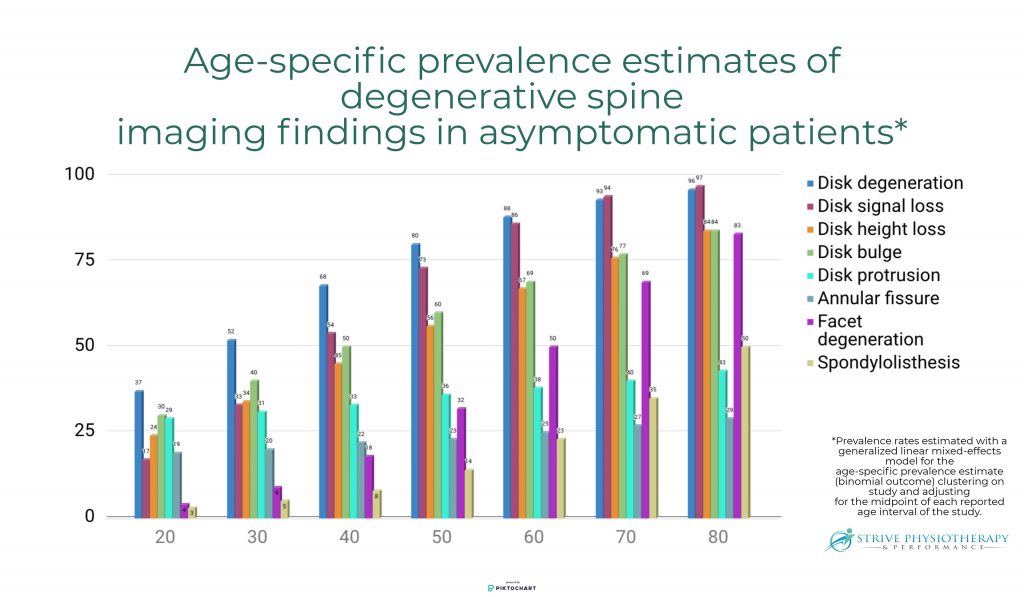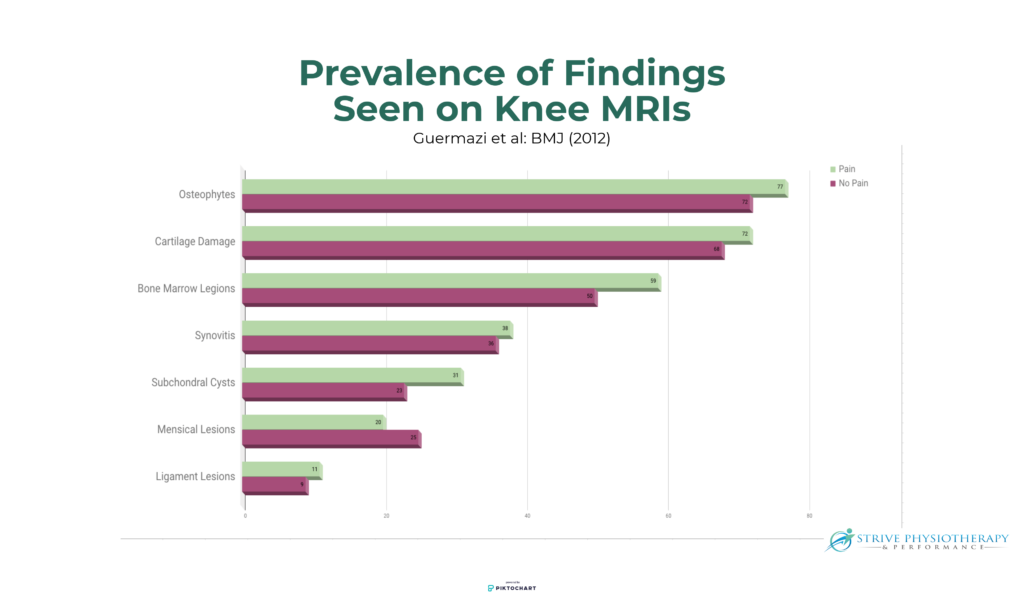
Based on the name alone, nobody wants to become a V.O.M.I.T.
What is a V.O.M.I.T. you ask?
V.O.M.I.T. stands for “Victim Of Medical Imaging Technology”.
In short, what this means is that, in many cases, the results shown on medical imaging (x-rays, ultrasounds, MRIs etc.) can be considered non-significant or unhelpful, despite sounding serious and concerning.
Thanks to the awesome team at the Advanced Physical Therapy Education Institute (APTEI), we can gather a great summary of why:
- ‘Lumbar (low back) disc degeneration’ is present in 40% of people under the age of 30, and in over 90% of people aged 50-55
- In fact, a study of healthy young adults, aged 20-22, with no back pain, showed that 48% had at least 1 degenerative disc, and 25% had a bulging disc
- An MRI study of healthy adults and seniors found that 98% of men and women with NO neck pain had evidence of degenerative changes in their cervical (neck) discs
- More than 50% (half) of adults aged 60 and older have MRI evidence of rotator cuff (shoulder) tears, and do not even know about them
- Studies show that up to 85% of adults with no actual knee pain have x-rays that show knee arthritis
Translation: DO NOT PANIC if imaging showed ‘degenerative changes’, ‘arthritis’, or ‘disc problems’, as these are usually considered a NORMAL part of aging!
And that was just a few examples! The trend is similar for almost every area of the body!
Now, keep in mind, I am not saying that imaging techniques are not useful. In fact, in many cases, they are considered the gold standard for diagnosis, which in turn, leads to the appropriate treatment.
Therefore, I am not saying that you should never get any medical imaging ever because it’s essentially useless. What I am saying is that in many musculoskeletal cases, the imaging does not correlate at all with the pain you feel, or the function you have. Further, V.O.M.I.Ts have been shown to require more doctor’s visits, have more disability, longer lasting pain, and lower sense of well-being.1
That being said, if a broken bone is suspected, you may require surgery, or we are trying to rule out a dangerous red flag (i.e. blood clot, tumour etc.), then please, please see your doctor and get the appropriate imaging.
So you’ve had some medical imaging and the results sheet is gibberish… what should you do?
First and foremost, have a medical professional thoroughly explain the findings of your imaging. Yours may in fact be significant, and further examination, or a specific treatment may be required. On the other hand, the findings may be considered ‘normal’ or ‘ a part of aging’, and you will be able to put your mind at rest, without becoming a V.O.M.I.T.

Take Home Message
Firstly, this post is meant to help the average person understand that most of the findings on musculoskeletal imaging are usually not significant enough to warrant aggressive medications, surgeries, or bed rest. Second, it is to encourage anyone who has had imaging to get a thorough explanation of the findings, to ensure they are at no significant risk of further injury, and to put their mind at ease. Lastly, in most cases, imaging results DO NOT CORRELATE with pain and function (for example, ‘severe arthritis’ shown on x-ray does not mean you will have ‘severe pain’ or a ‘severe loss of function’).
Still not sure what your findings mean, or what to expect with your injury? Call us at 519-895-2020, or use our online booking tool on www.strivept.ca to book an appointment with one of our knowledgeable physiotherapists, and they will be sure to help you understand your injury.
Cheers,
Tyler Allen
Physiotherapist at Strive Physiotherapy and Performance
Reference:
- VOMIT (Victim of Medical Imaging Technology). Advanced Physical Therapy Education Institute. 2017. Available at: http://www.aptei.ca/library-article/vomit-victim-of-medical-imaging-technology/. Accessed January 10, 2017.
